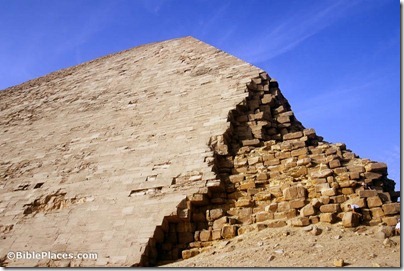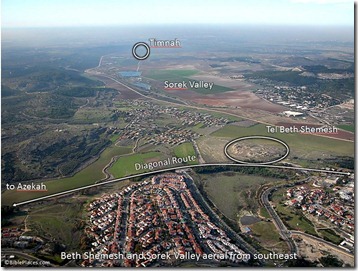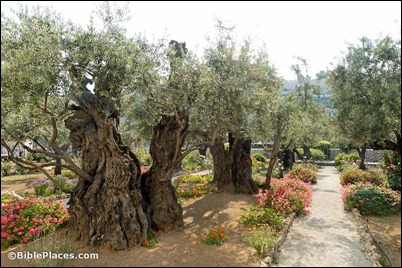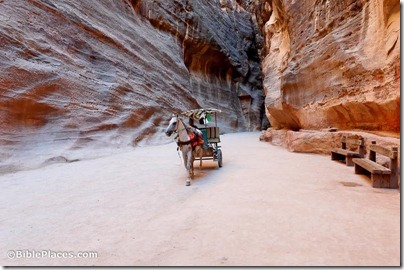Christopher Woods of the Oriental Institute is giving a free lecture on “Gilgamesh” for the Assyrian American Civic Club of Chicago, the Assyrian Universal Alliance Foundation, and the Mesopotamian Museum of Chicago. The lecture is this Sunday evening, at 5pm. More details are here.
If you’re near Penn State and are free Thursday evening, you might want to attend a lecture recently added to the 2012-13 program of the Central Pennsylvania Society of the AIA.
Dr. Amir Golani, Israel Antiquities Authority, “Economic Aspects of Silver Hoards and Jewelry at the End of the Iron Age in the Levant.” Thursday, October 25, 8:00 pm, in 101 Chambers Building
Abstract: The use of precious metals as a means for bartering throughout the ancient Near East dates back to the Bronze Age. The rise of the Neo-Assyrian Empire during the latter portion of the Iron Age II period (8th-7th century BCE) witnessed a steep rise in use of silver, appearing as silver ingots, cut silver chunks and whole and broken down silver jewelry. The sources of the silver indicate far-ranging trade contacts and its increased use reflects changing geo-political processes in the eastern Mediterranean and the ancient Near East. The silver, along with various textual sources that specify its use as a form of payment, are witness to the growing reliance on this metal as a medium of exchange. This talk will explore the sources of silver found in the southern Levant, the various forms in which it appears and how and why silver became a preferred medium of payment in the economic systems of the ancient Near East.
HT: Eric Welch
- Tagged Lectures
SourceFlix has just released a new video short, “Follow Me,” with some great footage of sheep and shepherds.
Hezekiah’s Pool (aka Patriarch’s Pool) in the Christian Quarter of Jerusalem has long been a swampy dump. The area was cleared last year and recently it held what Tom Powers believes is the first public gathering in its history.
Wayne Stiles: Beersheba epitomizes the faith God required to live in the Holy Land….God used this unassuming, barren place to shape some of the most significant lives in the Bible.
Heavy rains in the Eilat mountains and southern Aravah led to flooding of the Hai-Bar Yotvata Nature Reserve. Workers safely evacuated animals in danger of drowning.
Peter James answers some difficult questions about the Step Pyramid of Saqqara and the Bent
Pyramid of Dashur based on his years of repairing damaged structures in Egypt.
The Penn Museum is opening to visitors its conservation process of ancient Egyptian mummies.
Back issues of Christian History magazine are available as free pdf files.
Here is what looks to be like an interesting lecture this evening (in Hebrew): “The Tomb of David on
Mount Zion? Pierotti’s Cave?”
Amit Reem, IAA. At the Bible Lands Museum Jerusalem, 7:30pm. Free with museum admission.
HT: Jack Sasson
The Bent Pyramid of Dashur
The final report of a small excavation of biblical Japhia (Josh 19:12) has been published. The excavators identified possible hiding places used during the Jewish Revolt but not the double fortification described by Josephus.
Another stone workshop was excavated two miles north of Nazareth in the village of er-Reina.
Remains date from the Persian to Late Roman periods.
A final report was also recently published for Khirbet Keila near Zorah and Eshtaol, with remains from the Early Bronze, Intermediate Bronze, and Byzantine periods.
A final report is now available for a survey along the northern part of the “Diagonal Route,” from Shaar HaGai to the Elah Valley. The survey included portions of Tel Bet Shemesh and the area around Beit Jimal and Moshav Zekhariya.
Beth Shemesh and “Diagonal Route”
Labeled slide from Judah and the Dead Sea
Labeled slide from Judah and the Dead Sea
- Tagged Excavations, Galilee, Shephelah
The olive trees in the Garden of Gethsemane are about 900 years old and were all shoots of a single tree, according to a three-year study by the National Research Council announced last week in Rome. From TerraSanta.net:
The research results show that three of the eight olive trees (the only ones on which it was technically possible to carry out the study), as dating from the middle of the twelfth century. Hence, the trees are about nine hundred years old. But one point needs to be made clear: the date indicated refers only to the aboveground part of trees – the trunk and foliage. In fact, the same research has shown that the part below ground, i.e. the roots, is certainly more ancient.
The outcome of the investigation must also be put in relation with ancient travel chronicles of pilgrims, according to which the second of Gethsemane basilica was built between 1150 and 1170 (the period during which the Crusaders were engaged in the reconstruction of the great churches of the Holy Land and Jerusalem in particular). It therefore seems likely that, during the construction of the Basilica of Gethsemane, the garden was rearranged, creating a renovation of the olive trees present at that time.
The rest of the story describes the genetic relationship between the trees. Pat McCarthy (seetheholyland.net) informs me that radiocarbon tests carried out by the University of California in 1982 dated some of the tree roots to 2,300 years old. I have not been able to locate a reference for that study yet. Reuters covers the story here.
Ancient olive trees in the Garden of Gethsemane
- Tagged Jerusalem
Frank Moore Cross died this week. Hershel Shanks has written some reflections on their relationship.
James Davila describes his experience as a student. Eisenbrauns has a 50% sale on a volume of 55 key articles he wrote. Chuck Jones has created a list of his articles available on JSTOR. And Frank
Moore Cross: Conversations with a Bible Scholar is available as a free ebook.
A two-part interview with Robert Mullins on the new excavations of Abel Beth Maacah is now available at The Book and the Spade.
The Smithsonian Channel delayed the release of the documentary on the “Gospel of Jesus’ Wife.”
Hershel Shanks disagrees with Harvard Theological Review’s decision to delay publication of the article.
The historic souk of Aleppo, Syria, is a battleground today.
The Dead Sea will live again: Wayne Stiles explains and includes a slideshow, a video, and a map.
The 200th anniversary of the rediscovery of Petra is celebrated in a new exhibition in Basel.
“From Papyrus to Print: A Journey through the History of the Bible” is the central exhibit at the new
Bible and archaeology museum at New Orleans Baptist Theological Seminary.
Rachel Hallote will be lecturing on “Not-So-Innocents Abroad: The Beginnings of American Biblical Archaeology” on October 28 at Emory University.
Manfred Bietak will be lecturing on “Recent Discoveries at the Hyksos Capital, Tell el-Dab‘a
(Egypt)” on November 12, 7:00 PM in Hinkson Hall, Rodine Building, Trinity Evangelical Divinity
School.
HT: Al Sandalow, Jack Sasson, Joseph Lauer
The Siq of Petra
Photo from Pictorial Library of Bible Lands
Photo from Pictorial Library of Bible Lands
- Tagged Dead Sea, Lectures, Museums, New Exhibits, Syria, Weekend Roundup
Search
About the BiblePlaces Blog
The BiblePlaces Blog provides updates and analysis of the latest in biblical archaeology, history, and geography. Unless otherwise noted, the posts are written by Todd Bolen, PhD, Professor of Biblical Studies at The Master’s University.
Subscribe
Tags
10th Century
American Colony Photos
Analysis
Antiquities Trade
Dead Sea
Dead Sea Scrolls
Discoveries
Egypt
Excavations
Forgery
Galilee
Greece
Holidays
Israel's Coast
Italy
Jerusalem
Jezreel Valley
Jordan
Jordan Rift
Judah
Lebanon
Lectures
Mediterranean Islands
Mesopotamia
Museums
Negev
New Exhibits
Persia
Philistines
Photo Resources
Picture of the Week
Pseudo-Archaeology
Resources
Sad News
Samaria
Shephelah
Syria
Technology
Temple Mount
Tomb of Jesus
Tourism
Travels
Turkey
Weather
Weekend Roundup
Links
Notice
As an Amazon Associate we earn from qualifying purchases. In any case, we will provide honest advice.



